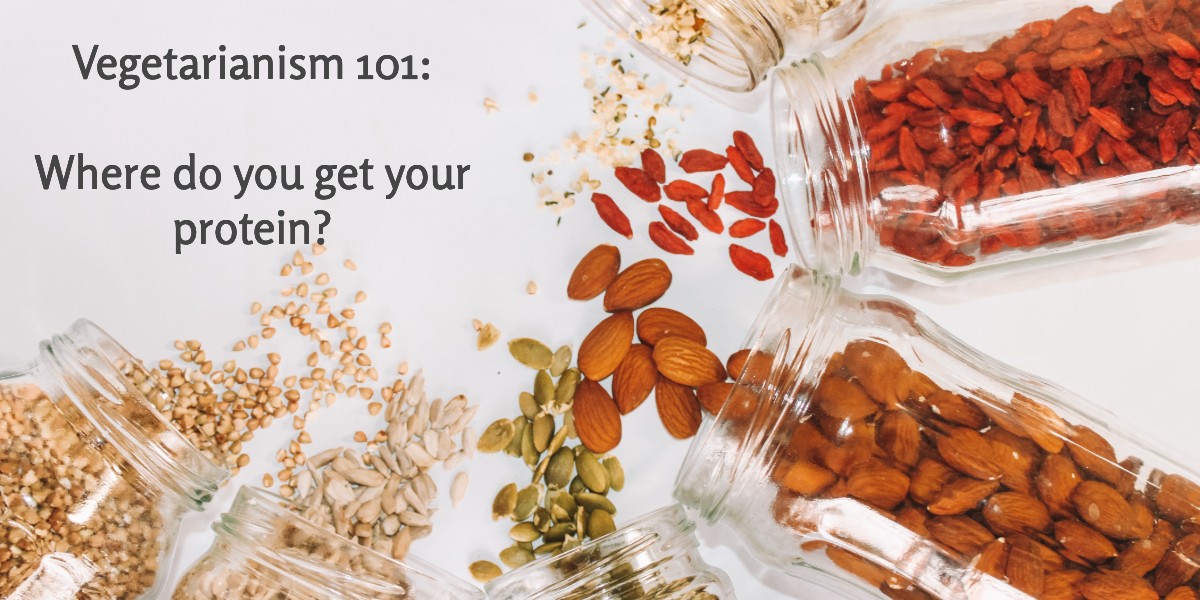By Raluca Tutulan, Registered Homeopath
What is protein?
Proteins are the building blocks of our cells. They are complex molecules that have multiple roles and functions in our body. Just like proteins are the building blocks of our cells, amino acids are the building blocks of protein. There are a total of 20 amino acids which combine in various sequences and complex 3-dimensional structures to make protein. Of the 20 amino acids, 11 are non-essential and 9 are essential. Non-essential amino acids are the ones our body can manufacture, while essential amino acids are the ones that we need to get from our food.
Our body then uses the non-essential and essential (retrieved from food) amino acids to build proteins for our body. Protein functions include antibodies, enzymes, messenger proteins, transport and structural support for our cells. They have a large range of function, and they are very important!
How much protein do we need?
The amount of protein we need each day is different for everyone. It depends on your age, body composition and level of activity. The National Institutes of Health recommends a daily minimum of 0.36 grams per pound for a sedentary person. (1)
For example, my minimum suggested protein intake is 60g. But I am active, so I try to aim for a higher protein intake in a day.
In the morning, I have a smoothie with one scoop of vegan protein powder which has 20 g of protein, with some added chia seeds and hemp seeds. I’m estimating that it provides about 27 g of protein.
Lunch could be a chickpea salad with 1 cup of cooked chickpeas which would have (10.56 g of protein)
My go to snack is an apple and 2 tbsp almond butter (5 g of protein)
Dinner vegetable is often a stirfry with quinoa (4.4 g of protein ) and fried tempeh (20 g of protein)
That’s it! That brings me up to 67 grams of protein in the day. I may have extra snacks throughout the day depending on how hungry I am. Side note: a healthy, filling snack should include a source of protein and fiber.
Where do you get protein?
Many foods contain protein, including nuts, seeds, beans, grains and even some vegetables such as potatoes and mushrooms!
Here is a quick list of some vegetarian sources of protein:
You can find the nutrition value of any food at https://www.nutritionvalue.org
| Food Product | Grams of Protein/ 100 G of Food Product |
| Quinoa | 4.4 |
| Tofu | 19 |
| Tempeh | 20 |
| Lentils | 7.9 |
| Chickpea | 8.9 |
| Lentils | 32 |
| Hemp seeds | 17 |
| Flax seeds | 18 |
| Peas | 5.4 |
| Spelt | 5.5 |
| Cashews | 18 |
| Sunflower seeds | 21 |
| Black beans | 8.9 |
| Egg | 7 g per 1 large egg |
| Cheese | 7 g per slice |
Vegetarian tip of the week:
Always include source of protein and fiber in your snacks and meals. It’s filling and reduces cravings for junk food and sweets.
Some snack ideas include:
Nuts and fruit
Hummus and vegetables
Hard boiled egg and veggies
Guacamole and seed crackers
Smoothie with hemp seeds and chia seeds
What’s next?
Check back in for tips on getting essential fatty acids in your diet!
If you would like to book a vegetarian transition consult with Raluca and get 1-on-1 guidance on how to make the necessary changes for you contact her here
- Trumbo, P., Schlicker, S., Yates, A. A., & Poos, M. (2002). Dietary reference intakes for energy, carbohydrate, fiber, fat, fatty acids, cholesterol, protein and amino acids. Journal of the American Dietetic Association, 102(11), 1621-1630.
